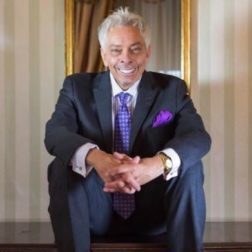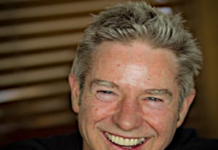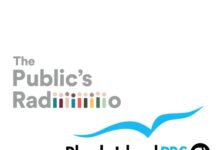
(By Mike McVay) The golden rule of programming is to provide the listener with Instant Gratification. If you’re programming a music station, then play the biggest hits the most frequently, so that every time they click on your station, they hear a favorite song. If yours is a News/Talk station, then you have to talk about the hot topics and “play the hits” as if you are a music station. Sports stations that are successful do the same thing, in a conversational manner, all the while avoiding “X’s & O’s.”
Your music/story rotations will vary by format, but running an OES (Optimum efficiency Scheduling) analysis, can give you the answer to how many times a song/story needs to repeat in a week to be heard by the audience 3.5 or more times. I’ve always liked to look at the national average of Time Spent Listening (TSL) for a format and then either speed-up or slow-down content turnover based on getting the audience to listen longer.
There is a common thought that if your ratings are down and you have a shorter than average TSL, a small library or frequent exposure of songs hurts your TSL. The reverse is true, if you’re play the right songs. Want to build TSL … tighten the library and increase how often you play the hits … music or stories. When you see your TSL grow, then start to slow your rotation. All of this is dependent on presenting what you know are the hit songs/stories.
Information on radio has changed dramatically over the last few years. Most people hear breaking news first on their phone, signaled by an alert, that calls attention to a social media app, news/sports app or a station app. They come to your radio station for more details, or opinions, if they don’t have video easily available to them. I’m not demeaning the value of news on the radio. It’s an important asset, and you cannot ignore the news, but you have to be aware that radio is not the warning system that it once was. Which is why all stations should have an app and offer it to their audience.
Content falls into these categories; Heart, Purse, Health, Safety, Relaxation, Local and National stories. Heart stories touch the heartstrings. The story of those impacted by Hurricane Ida. The winners of the Paralympics and their stories, a good deed done by a community leader, or honoring those whose lives were lost during the evacuation from Afghanistan. Those are examples of Heart stories.
Purse stories touch on anything that impacts our pocketbooks. Gasoline prices are skyrocketing. The average American struggles to payoff college loans. The PPP Loans of many have been forgiven. Be it good or bad, anything that impacts what you make or how you live is important to your audience.
Health stories have been important for years, but never more so than during a pandemic. The population of the USA is top heavy with Post War Baby Boomers. That means that their aging issues will put pressure on the health system and saddle the next two generations with caring for their parents and grandparents. Selfcare falls into this category.
Safety stories are on the top of everyone’s mind. Safety for themselves and for their families. Tell the audience how to stay safe during a social disturbance by sharing what areas to avoid. Safety might be family focused, like announcing a recall for a specific car seat, or making the listener aware of a food recall.
Relaxation stories are about the management of stress in our lives, where to go with your free time, how best to enjoy time away from work, and how to entertain or connect with one’s family.
Local and National stories, whatever the content, need to be tied to the community that the stations serving, but even more important is that the stories are those that the local market is interested in and that meaning to them. Don’t deliver a national or local story just because it exists. What’s it’s connection to the target audience? Answer that question.
The stories don’t necessarily air in this order, but whenever you have content that can fill one of those buckets, it’s a bonus as it enables you to present sticky content. These stories can air inside the newscast or be delivered by a personality outside of a newscast. Their value is at the same level regardless.
The most consistently highly rated radio stations have great entertaining personalities who build loyalty among their audience. The mark of success for an air talent is when their core audience feels that if they miss a show, they’ll miss something. That’s what builds daily tune-in and that’s what overcomes the occasional wobbles of audience measurement.
It should be obvious that personalities who generate great ratings are extremely valuable, hard to come by, and are a greater key to success than promotion and marketing. Investing in the right talent can be a better use of your funds than marketing. That’s not to say that Promotion and Marketing are not important. They’re definitely important, but if you promote a bad product, you simply accelerate its demise. Building your station around great personalities leads to longer lasting success.
Great promotion is like Life. Expectation, Realization and Memory. Tell the audience what they can win and hype the benefit of winning the prize. Don’t get bogged down in the details of the prize. Talk about how winning the prize will make the winner feel. When the prize is given away, tell the winner that they won, and then be quiet and let them speak. The silence will be a signal that they should speak. That’s when you will hear their story. Their telling of their story allows all of us to share in that winning experience. The piece that’s often missed is Memory. That’s where we not only hear who won the prize, but you create promos from the audio of when you present the winner with their prize. It’s a great way to extend the magic of winning.
Marketing today is exceptionally difficult. There’s so much noise in the marketplace. Messages are everywhere. TV, Video, streaming, in podcasts, outdoor, transit, social media, direct marketing, print and on your own airwaves. The most effective is ALL OF IT at once. No one can afford that today. That leads me to suggest targeted marketing as the most effective for messaging and the most cost-effective way to reach an audience and convert potential listeners. I like outdoor because it is “point of purchase.” Although using direct marketing and social media together, provides the best opportunity, and has the least financial waste to a marketing plan.
The final piece of the construction of The Total Radio Station is Culture. You hear that word bantered about in regard to sports teams, but it holds true for every business, and especially one that depends on creative individuals to perform. Can you create a culture where your talent want to perform, are excited to perform and know that you have their backs in providing them with the tools and guidance to be successful? You can feel the winning spirit the minute you walk in the door of a station with great culture. You can heart it on the air. That’s where it matters the most. What comes out of the speakers is a reflection of the culture of the station.
Mike McVay is President of McVay Media and can be reached at [email protected]






Safety stories are on the top of everyone’s mind. Safety for themselves and for their families.